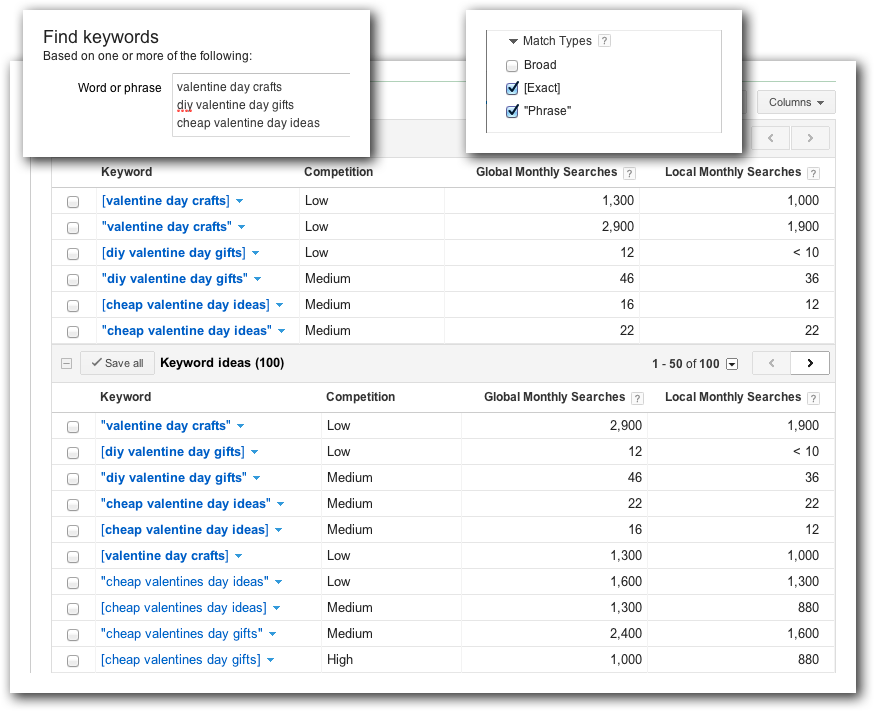Blogging Blueprint: How to Create & Promote The Perfect Post
 Do you have a business blog that's not getting the visits, readership and engagement that you are looking for?
Do you have a business blog that's not getting the visits, readership and engagement that you are looking for?
Spending a lot of time writing blog posts and not seeing any sort of return on your investment can be frustrating. Chances are, you may not be creating the right type of posts, or not optimizing them, or not promoting them. Any one of these can turn your blog post into a tree falling in the forest.
In this post, I'll walk you through a step-by-step process of making the most of every single post. (Hey, I'm a poet, and I didn't even know it!)
1. Conceive of a topic that solves the problem of your ideal customer.
Chances are you've been doing this long enough that you know the challenges your customers face. Come up with an idea of what the blog post is going to cover, whether it helps them raise their child, raise donations, or raze a building.
2. Uncover the keyword phrase that your ideal customer is using at Google.
I recommend Google's Keyword Tool.
Drop a couple of variations on a theme into the search box, deselect “broad” and select “exact” and “phrase” under match types in the left column, and hit search.
This will generate some keyword ideas. Look for phrases with lots of search volume. The competition is based on the pay-per-click bidding, but it will give you some insight into whether this phrase will be relatively easy or difficult to rank well for.

3. Start with an engaging, keyword rich title.
Your title is critical. It must grab the reader's attention and get them to want to read more or at least share it on Twitter.
Lead with your best keywords, as the search engines put the most weight on the first few words of the title. If your keyword phrase was “Cheap Valentine's Day Gifts,” you might have a title: “Cheap Valentine's Day Gifts: Saying I Love You on a Budget.”
4. Write an opening sentence with your keyword phrase.
A title needs help. Search engine look not just for your keywords, but where you place them. Make sure you use your phrase in the opening sentence.
5. Explain the benefit to the reader in the next paragraph.
There's a number of ways to go about this, whether you start off by asking a question, like I did above, or just jump right into the problems that your post will help the reader solve.
6. Keep your post focused.
Both your reader and the search engines appreciate focused content. This can help with your search engine visibility and the likelihood that your readers will share your content.
7. Make it easy on the eyes.
Big blocks of text on the screen are difficult to read. Break up your content with subheaders (like in this post) and bulleted lists.
8. Wrap it up.
Don't leave the visitor hanging. Give them a recap, or some takeaways, or draw some conclusions.
9. Ask for comments.
While I've often said that comments aren't customers, they can help with the social proof on your blog, and make your blog more engaging.
There are several ways to get people to leave comments, including the outright ask, or posing a question that they can answer in the comment section, or asking for people to provide examples of when something similar happened in their own life or business.
10. Find a good breaking point.
Your blog home page should work like a good news page: it should tease the stories, showing more “above the fold.” To accomplish this, use the Insert Page Break feature in your blogging platform.
I recommend right after where you've explained the benefits of reading your post.
11. Find a great image to use at the top of the page.
People are visual and a good image can really pull them in. Plus, with the rise of Pinterest, an eye-catching visual can greatly increase your chances of getting pinned and driving more traffic to your blog.
12. Use an appropriate alt-tag for that (and every) image in your post.
Google's image search can drive more traffic to your site, and alt-tags are just the right thing to do. Start by saving the image file with a keyword rich name, like potato-peeling-tips.jpg, and then add an appropriate Alt Tag like “Potato Peeling Tips.”
13. Find appropriate places to link to other blog posts or pages on your website.
Creating links to other posts and pages can provide additional help and resources to your readers, and can help promote older posts. In addition, those internal links can really increase your search engine visibility.
14. Find appropriate places to link to other sites.
Share the love! Linking to authoritative sites provides value to your readers and may help your search engine visibility.
15. Proofread it.
Nobody's perfect, but too many typos can damage your credibility and hurt your message. If you suck at grammar, give the editing job to someone else.
Ironically, “proofread” never looks right to me.
16. Publish it.
‘Nuff said.
17. Use your share buttons.

You know how bartenders put a dollar or five in their tip jar at the beginning of their shift? Yeah, do that.
Click on the Facebook like button, retweet button, +1 button, and anything else you have. This primes the pump for the next visitor to your post. They see that people have already shared it and say, “wow, this must be valuable,” and hopefully share it themselves.
Plus, you're spreading the word.
18. Send it to your email list.
These days I recommend sending out a teaser email rather than the full blog post to your subscribers. It brings them back to the post where they can more easily share it or comment on it.
19. Schedule some tweets.
I'm not a big fan of automation, but scheduling out some tweets isn't a bad idea. I use TweetDeck, but others prefer Hootsuite or Buffer.
Since your tweets don't have a very long shelf life, it's a good idea to post 3 or 4 times during the day. I try and phrase things differently, and feature different elements of the post. You can even find out which tweets drove the most traffic to the post with this nifty trick.
20. Publish it to your Facebook profile.
I know you just “liked” it through the Facebook share button, but you'll get more visibility if you head back into Facebook and post the link into your timeline.
21. Publish it to your Facebook business page.
If you've got a lot of overlap between Facebook friends and your business fans you might want to stagger this update by a couple of hours or so. I also recommend taking a screen capture of the top of the post and making that part of your update so that it shows up more prominently in the newsfeed. Just remember to keep the link in the update.
22. Like, comment on, and share that update.
Switch back to your personal profile and like and comment on your business page's post immediately. An hour or two after that, share it on your personal profile. Any likes, comments or shares you get on this will also count towards your page's engagement ranking.
23. Find appropriate groups on LinkedIn and share it there.
Yes, you posted it to your LinkedIn profile when you clicked on the LinkedIn share button, but you'll get more mileage when you post it to a relevant LinkedIn group. Or two. Or three.
If you're a pro, you might consider staggering the posts to the groups, one per day, so you don't look like one of those guys who posts the same self-promotional crap to every group he belongs to. (Hangs head in shame.)
24. Post it to Google+ as yourself, and later as your business.
There are search as well as social benefits to Google+.
25. Pin it to Pinterest.
The shelf life of a pin can also be short, so consider posting it once a day for two or three days.
26. Use other social media platforms as appropriate.
Reddit, StumbleUpon, even Digg might be appropriate for your content.
27. Respond to comments.
If you want to build a community and get subscribers and repeat visitors, you need to get them engaged. Respond to every comment on the blog, whether positive or negative, for as long as you can keep it up.
That might mean for the first 10 comments, or the first two days, or forever. Your call.
28. Be consistent.
The trick to blogging, or social media, or life, is to be consistent. Whether that means daily posts (crazy!), weekly, or even every other week. Create consistently valuable posts and publish them consistently.
Rich Brooks
